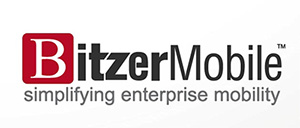
Bitzer Mobile Creates App to Enable Security Direct Access to Intranet Files
 Commenting on a recent New York Times story about IT managers challenged with a mobile workforce, Indus Khaitan, co-founder and vice president of Bitzer Mobile, said “Businesses are moving faster on cloud without rethinking security. Workforce productivity is on the tear as employees are no longer waiting for IT departments to provision applications and servers to move data between customers, partners and co-workers. However, the recent attacks on popular cloud-based services pose a major threat. Users are taking matters into their own hands as IT is not able to keep up with the demands from the users who constantly push the envelope.”
Commenting on a recent New York Times story about IT managers challenged with a mobile workforce, Indus Khaitan, co-founder and vice president of Bitzer Mobile, said “Businesses are moving faster on cloud without rethinking security. Workforce productivity is on the tear as employees are no longer waiting for IT departments to provision applications and servers to move data between customers, partners and co-workers. However, the recent attacks on popular cloud-based services pose a major threat. Users are taking matters into their own hands as IT is not able to keep up with the demands from the users who constantly push the envelope.”
“In parallel, ISVs (Independent Software Vendors) are catching up in creating toolsets to monitor and protect data from malicious intents. However, adoption is slow. As a result, cloud-based services are getting compromised as user's bypass traditional IT and overlook security and corporate data protection altogether.”
To meet this challenge, Bitzer has introduced Bitzer m/Drive, an enterprise-grade, mobile app that enables secure, direct access to corporate Intranet files from mobile devices. Bitzer m/Drive is designed for enterprises to provide secure, authenticated access to Windows Network Intranet files from employee mobile devices without the requirement of cloud-sync applications.
Today’s mobile employees are demanding access to corporate Intranet resources and data from their personal phones and tablets to increase productivity. Savvy employees bypass the traditional network perimeter by using cloud-based, file-sharing applications on laptop, desktop and mobile devices, which frequently sync data to cloud services that are not under enterprise IT control and pose potential liability and risk for enterprises.
Enterprise IT prefers that mobile employees access Intranet files directly from existing Windows file servers that have been provisioned by IT with role-based access control. However, this direct access from mobile devices is not possible today because mobile devices cannot log in to the Windows Network without compromising network security using constrained delegation.
Bitzer’s patent pending technology enables smartphones and tablets to log into a Windows Network and access corporate file shares without compromising security by using true Kerberos SSO. Bitzer m/Drive provides seamless browsing and transfer of Intranet files, as if employees were navigating, using a local Windows drive. In addition, it is available at a fraction of the cost for an enterprise license of popular cloud-based, file-syncing products.
“The typical end user has 3 or more endpoint devices, and they want to access their corporate data from all of them. But, corporate data often lives on file servers or NAS devices locked behind a VPN. While some companies are putting data into the cloud to solve the access issue, there are terabytes of data sitting within an enterprise that is not moving to a cloud anytime soon, “ said Terri McClure, senior analyst at ESG. “Bitzer has found a unique approach to enable end users to have safe, authenticated access to data while encrypting data-at-rest, in-transit and in-use. This addresses the security needs of security-minded companies and user experience sought by the employees.”
Bitzer m/Drive offers the following features and capabilities:
- Ability to access Intranet file servers from mobile devices using true Windows network login;
- Ability to upload and download files; creation and deletion of folders on the share;
- Ability to share a file using the integrated e-mail client as well as a built in editor for Microsoft PowerPoint, Excel and Word documents;
- Integration with existing Windows authentication back-end using Active Directory for role-based access;
- Out-of-the-box integration with Bitzer’s BEAM platform that includes e-mail, calendar, contacts, and a secure browser to the enterprise Intranet;
- Fine-grained, policy-based access control for a secure workspace; easy enforcement of data governance such as sharing, clipboard control, geo-fencing and time-based restriction; and
- Integrated app-tunnel for authorized access to Intranet, eliminating the need for wide-open, VPN connectivity.
Bitzer m/Drive is available immediately for corporate IT users. Enterprise pricing for m/Drive starts at $7 per user per month, which includes Bitzer Secure container and secure remote access to corporate Intranet.